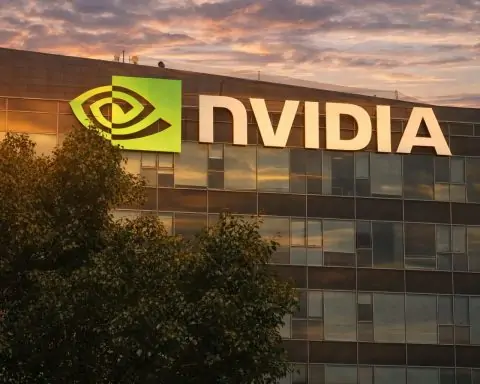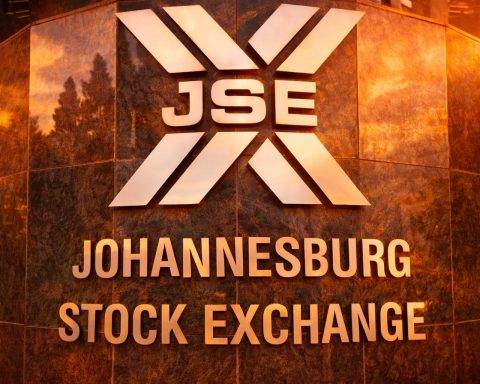Tech’s rough first week of November gave way to a rebound today. We break down what’s moving the Vanguard Information Technology ETF (VGT) and the Technology Select Sector SPDR (XLK), how they differ under the hood, and what fresh research says about concentration risk, costs, and diversification.
Key takeaways
- After last week’s slump, XLK and VGT are bouncing intraday today; XLK is around the mid‑$290s and VGT in the high‑$770s as of mid‑afternoon UTC.
- Fresh commentary today highlights valuation pressure and concentration risk in mega‑cap tech as a reason to hedge or trim, while others stress diversification—especially after the recent wobble. [1]
- VGT holds far more names (≈314) than XLK (≈69) and reaches deeper into mid/small caps, but both funds remain top‑heavy in Nvidia, Apple, and Microsoft. [2]
- Costs are ultra‑low: XLK 0.08% vs VGT 0.09%. Indexes differ: XLK = S&P 500 tech sector, VGT = MSCI US IMI Information Technology 25/50. [3]
Why today matters
- This morning (Nov. 10): Business Insider flagged the tech sell‑off since Nov. 3, noting XLK down ~5.6% over that stretch and proposing equal‑weight as a hedge for mega‑cap concentration. [4]
- Today: Invesco’s strategists say the tech pullback heightens the case for diversification, reiterating that sector exposure can be volatile. [5]
- Intraday: Sector leaders/laggards data show tech among the leaders today as dip‑buyers step in. [6]
- Weekend context: MarketWatch reported tech’s worst week since April into early November, underscoring why positioning is in focus. [7]
What the latest research says about VGT and XLK (Nov. 2025)
- “Time to cut exposure?” A new Seeking Alpha analysis published today argues that after this year’s surge, both XLK and VGT are highly concentrated in a handful of mega‑cap winners—raising drawdown risk; the author’s stance: reduce exposure. [8]
- “Broader tech diversification”: A recent Motley Fool piece (syndicated on Sharewise) highlights that VGT holds more names and industries than XLK, potentially offering broader breadth across vertical software, IT services, and niche semis. [9]
Bottom line from the coverage: breadth versus precision. VGT’s bigger roster can smooth single‑name shocks, while XLK is a pure S&P 500 tech‑sector slice with laser‑focused large‑cap exposure.
Under the hood: where VGT and XLK really differ
Index & mandate
- XLK seeks to match the Technology Select Sector Index (S&P 500 tech companies). [10]
- VGT tracks the MSCI US IMI Information Technology 25/50 Index (large, mid, and small U.S. IT stocks; 25/50 capping to limit single‑issuer weights). [11]
Holdings breadth & concentration
- Holdings count: XLK ~69 vs VGT ~314 (as of early November and September 30 factsheet, respectively). [12]
- Top‑10 concentration: XLK ≈61.9% (sum of the 10 largest positions as of Nov. 7) vs VGT 57.9% (factsheet). That’s less top‑10 concentration for VGT, even though both are top‑heavy. [13]
- Top‑3 concentration: VGT ≈43.8% (NVDA, AAPL, MSFT) vs XLK ≈39.2% (NVDA, AAPL, MSFT). The three megacaps dominate both, a key risk flagged by today’s commentators. [14]
Industry tilts
- XLK: Semiconductors ~38%, Software ~34%, Hardware ~15% (Nov. 7). [15]
- VGT: Semiconductors ~31%, Systems Software ~20%, Hardware/Peripherals ~16%, Application Software ~15% (Sept. 30). [16]
Costs & valuation snapshots
- Expense ratio: XLK 0.08%; VGT 0.09%. [17]
- Valuation context: XLK’s FY1 P/E ~31.4 (Nov. 7), while VGT’s factsheet shows a P/E ~41.4 (methodologies differ—forward vs. provider’s calculation). Interpret with care and like‑for‑like comparisons. [18]
Today’s positioning debate: trim, hold, or rotate?
- Trim/hedge case: Today’s BI piece highlights the mega‑cap concentration and suggests equal‑weight or broader diversification to reduce single‑name risk—especially after a down ~5–6% stretch this month for sector proxies like XLK. [19]
- Diversify/don’t panic case: Invesco notes that pullbacks can be a reminder to diversify across sectors, styles, and caps rather than reacting pro‑cyclically at extremes. [20]
- Tech‑specific view: The Seeking Alpha article out today pushes a “reduce exposure” argument for both VGT and XLK on concentration and frothy pricing. Use that as a prompt to reassess allocations, not a blanket directive. [21]
Quick stats: VGT vs. XLK (latest provider data)
| Metric | VGT | XLK |
|---|---|---|
| Index | MSCI US IMI Information Technology 25/50 | Technology Select Sector Index (S&P) |
| Expense ratio | 0.09% | 0.08% |
| Holdings (approx.) | ~314 | ~69 |
| Top‑3 weight | ~43.8% | ~39.2% |
| Top‑10 weight | 57.9% | ~61.9% |
| Biggest weights | NVDA, AAPL, MSFT | NVDA, AAPL, MSFT |
| Industry tilt (Semis) | ~31% | ~38% |
Sources: Vanguard VGT factsheet (Sept. 30, 2025) and State Street XLK webpage (updated Nov. 7–10, 2025). [22]
What to watch next
- Breadth vs. megacaps: If markets keep rewarding breadth, VGT’s deeper roster could help; if megacaps reassert leadership, XLK’s large‑cap focus may snap back faster. [23]
- Flows as a signal: U.S. ETFs just posted a record $176B of inflows in October, a reminder that money can rotate rapidly between sectors and styles. [24]
- Macro catalysts: Rates, earnings quality in semis/software, and AI capex updates—all key drivers for both funds’ top holdings. (See S&P’s sector resources for ongoing context.) [25]
Editorial view (Nov. 10, 2025)
- If you’ve enjoyed outsized gains from tech this year, the combination of:
(1) high top‑3 concentration (both funds),
(2) valuation premia (provider metrics differ but point the same way), and
(3) recent volatility,
is a solid rationale to rebalance to your target weights rather than wholesale exit. Use VGT if you want broader tech breadth (more mid/small caps and verticals), or XLK if you want a clean, large‑cap S&P‑tech slice at the lowest possible fee. [26]
Sources and further reading (Nov. 8–10, 2025)
- Business Insider (Nov. 10): Tech sell‑off and equal‑weight hedge; XLK −5.6% since Nov. 3. [27]
- Invesco (Nov. 10): Tech selloff amplifies the case for diversification. [28]
- Seeking Alpha (Nov. 10): VGT and XLK: Time to cut exposure to these large ETFs. [29]
- Sharewise/Motley Fool (Nov. 2): VGT offers broader tech diversification than XLK. [30]
- MarketWatch (Nov. 8): Worst tech week since April. [31]
- State Street (XLK) fund page (updated through Nov. 10): Holdings, costs, industry mix. [32]
- Vanguard VGT factsheet (Sept. 30): Index, costs, holdings, sub‑industry mix. [33]
- ETF.com (Nov. 3): Record $176B ETF inflows in October. [34]
Disclosure: This article is for information/education and is not investment advice. All investments involve risk, including loss of principal. Indices and forward P/E methodologies vary by provider; compare like‑for‑like when evaluating valuations.
References
1. www.businessinsider.com, 2. fund-docs.vanguard.com, 3. www.ssga.com, 4. www.businessinsider.com, 5. www.invesco.com, 6. www.benzinga.com, 7. www.marketwatch.com, 8. seekingalpha.com, 9. www.sharewise.com, 10. www.ssga.com, 11. fund-docs.vanguard.com, 12. www.ssga.com, 13. www.ssga.com, 14. fund-docs.vanguard.com, 15. www.ssga.com, 16. fund-docs.vanguard.com, 17. www.ssga.com, 18. www.ssga.com, 19. www.businessinsider.com, 20. www.invesco.com, 21. seekingalpha.com, 22. fund-docs.vanguard.com, 23. www.sharewise.com, 24. www.etf.com, 25. www.spglobal.com, 26. fund-docs.vanguard.com, 27. www.businessinsider.com, 28. www.invesco.com, 29. seekingalpha.com, 30. www.sharewise.com, 31. www.marketwatch.com, 32. www.ssga.com, 33. fund-docs.vanguard.com, 34. www.etf.com







